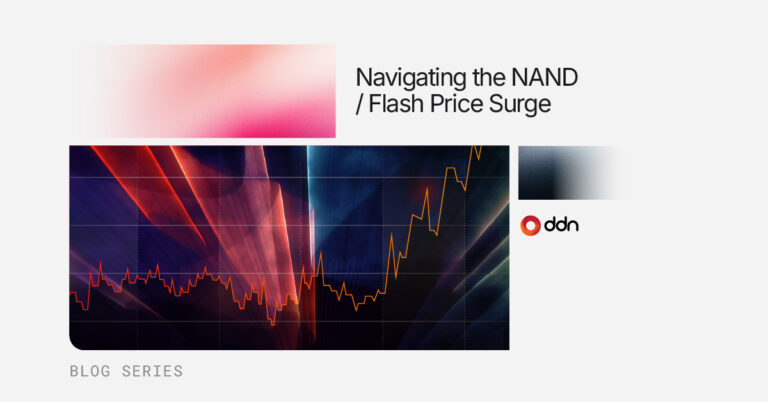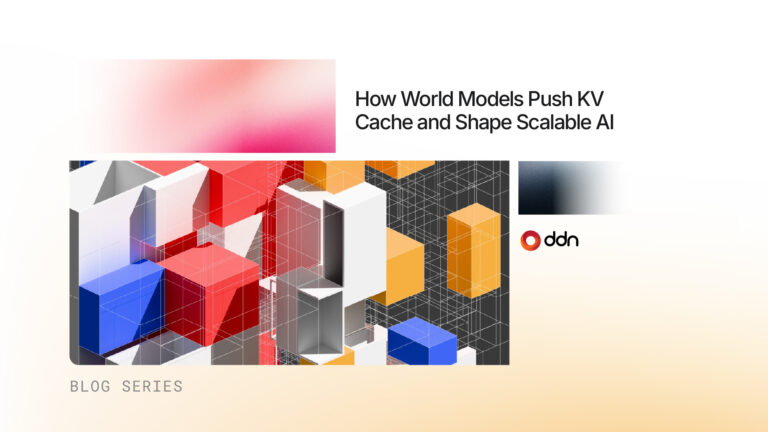By Nasir Wasmin, AI/ML Solutions Architect
Can you believe how far we have come with self-driving cars? What once felt like pure science fiction is now a reality. It’s truly amazing to see that they are now being developed and are even on the roads. Major car manufacturers are pouring billions into turning this into a reality. But it’s not just about advanced technology; it’s really about a complex ECO system of AI working together. Each part has its own role: one system watches the road, another predicts the actions of surrounding vehicles, and another decides when to turn or brake and this collaboration is what makes autonomous driving possible.
Having had the privilege of serving with leading automotive innovators like Tesla, Audi, Cruise, Aurora, Ford, and Mitsubishi for their ML initiatives, I have witnessed firsthand the vital importance of a strong data foundation in advancing autonomy. What most people don’t realize is that it all comes down to data, mountains of it. How that data moves around across different stages of the AI lifecycle could make or break the autonomous future we’ve been promised.
In this post, we explore how AI is driving the autonomous vehicle revolution, the technical hurdles at each stage of AI development, and why high-performance infrastructure and access to data intelligence are becoming critical to success.
What’s Powering Self-Driving Cars?
Autonomous vehicles rely on a stack of tightly integrated AI systems. These models don’t just decide when to brake or accelerate; they perceive, predict, plan, and constantly learn patterns.
Seeing the World (Perception)
This is the first step in the decision-making pipeline, where the vehicle makes sense of its surroundings. The car needs to understand what’s around it using cameras, LiDAR, radar, point cloud (digital twin), and other sensors. Special AI models process these inputs to identify everything from pedestrians to stop signs, all in real-time.
The challenging aspect? These systems need to work at incredibly high speeds and handle tough conditions like bright sun glare or heavy rain, and they can’t afford mistakes. You miss one pedestrian in the data, and you have a serious safety problem.
Predicting What Happens Next (Prediction)
Once the car detects its surroundings, it must predict the actions of everything nearby. Will that cyclist turn left? Will that car change lanes?
To achieve this, the car uses different types of neural networks that analyze movement patterns and understand how objects interact in real-time. The challenge is dealing with unexpected behavior, like a child suddenly running into the street or something that’s rare but critically important to handle correctly.
Making Driving Decisions (Planning & Control)
This is where the car decides its actual path, when to turn, slow down, or change lanes. These systems combine reinforcement learning (where AI learns from experiences) with careful programming to follow traffic laws and make safe decisions. Planning systems must react in milliseconds, and any lag or loss of input can cause incorrect lane changes or unsafe merges.
Testing in Virtual Worlds (Simulation)
It is true that no company can safely test every possible scenario on real roads. That’s why simulation is crucial, creating virtual worlds where AVs can drive millions of miles in challenging scenarios. These simulations generate massive amounts of data that need to be processed quickly.
The biggest issue? Simulation platforms generate massive logs and require real-time rendering and model integration. If I/O speed is insufficient, GPU clusters starve, extending development timelines by months or years
The Car as Your Assistant
Modern cars are not just about driving; they also use AI for voice commands, monitor driver attention, and personalize your driving experience. These models must be optimized for edge deployment with limited computing and energy constraints. Poor performance here will reduce customer satisfaction and, in some cases, safety as well.
The Hidden Challenges No One Talks About
Behind the flashy demos, there are some serious technical hurdles:
- Data Tsunami
A single test fleet generates, on average, over 1.6 petabytes of data daily (source Nvidia), which is equivalent to about 400,000 HD movies every day! This includes 4k-resolution videos (120 FPS), LiDAR point clouds, radar scans, GPS, logs, and more. Without scalable object storage, intelligent filtering, deduplication, and hot-cold tiering strategies, infrastructure costs balloon, and data become unmanageable. - Data Curation
Managing the massive flow of data from self-driving cars requires more than just storage, it demands data intelligence in a well-structured format that does not have class imbalance allows quick access to petabytes of multi-modalities. - The Labeling Nightmare
Before AI can learn from data, humans need to label it, and Imagin labeling video recording for thousands of hours with sensor fusion data for marking pedestrians, cars, lane lines, and more. If data pipelines aren’t unified and fast, version mismatches or latency can delay training cycles and cause model drift. - Painfully Slow Learning
Training these AI models requires feeding them tens of millions of examples. Each model variant (perception, prediction, planning) may have dozens of experiments running simultaneously. If your systems can’t deliver this data to your computing clusters quickly enough, training that should take days stretches into weeks. - Testing Gridlock
Companies need to replay thousands of hours of driving data through their latest AI models to check for problems. Systems must support high-speed retrieval of individual frames and efficient querying of metadata tags, for example, time of day, weather, GPS route, sensor type, and much more. This makes it possible to query very specific scenarios later for fine tuning, like “nighttime highway footage with rain and high pedestrian density.” When the underline architecture can’t deliver this data quickly, the entire testing process falls behind, delaying critical safety improvements and product release. - Getting Updates to Vehicles
Deploying new AI models to a fleet isn’t as simple as pushing a smartphone update. It requires careful version control and monitoring, and any delays create safety gaps. Keeping track of dataset versions is crucial for AI teams to trace which specific data was used for training and testing their AI models to ensure reliable results. - Simulation Bottlenecks
Running realistic simulations across thousands of scenarios requires serious computing power and lightning-fast data delivery. When simulations can’t run efficiently, development teams sit idle and costs will pile up.
Why AI enabled Infrastructure Is the Unsung Hero
While everyone focuses on fancy sensors, GPU’s and AI algorithms, what really determines success is something less glamorous: “data intelligence”. The industry needs a next gen AI powered Data Intelligence platform which is purpose-built for AI-driven automotive workloads. Ideally, such a system would offer:
- Speed That Matters: The system should be capable of retrieving data in under a millisecond and moving terabytes per second. This isn’t just about storage metrics, it reduces model iteration time from weeks to hours. Faster iteration means faster time to deployment that ultimately reduces accident risk through broader edge-case coverage.
- Unified Data Pipeline: Legacy AI stacks often combine separate systems for ingest, labeling, training, and deployment. Each handoff introduces latency and operational fragility. The Ideal platform unifies these into a single namespace with native API, reducing errors, improving observability and unlocking automation via MLOps tooling.
- Simulation Power: A robust system must handle massive, unpredictable data streams required for full-fidelity simulations. It should support bursty I/O and concurrent compute loads without starving GPU clusters.
- Smart Edge Computing: Optimized data movement between edge devices (vehicles) and core infrastructure is essential. The right system should support local caching of models and efficient telemetry uploads, improving both road performance and learning cycles.
- Flexible Deployment: The ideal solution should be cloud-native and hybrid-ready, whether you are running in your own data center or leveraging the public cloud, the architecture should scale fluidly without major rewrites.
- Visibility Into Problems: Observability isn’t just about the logs; it’s about real-time IO metric, Built-in observability should pinpoint storage or compute bottlenecks, helping teams debug simulation stalls or training slowdowns with real-time metrics and traceability. A pipeline that natively tracks these and provides faster root-cause analysis, reducing debug cycle by days.
The Bottom Line: Fast Data = Faster Innovation
The race to develop truly autonomous vehicles isn’t just about who has the best AI algorithms. It revolves around the speed of data processing, who has the right scalable infrastructure where they can move data fastest, train models most efficiently, and test their model thoroughly. This isn’t just a technical detail; it’s where the battle will be won or lost.
Because self-driving cars don’t just need to think well. They need to learn fast, and that learning happens through data intelligence.
And that’s where DDN comes in. It checks all these boxes and has already proven itself as a strategic enabler in AV programs.
DDN achieves terabyte-per-second throughput, enabling the processing of enormous data volumes with sub-millisecond latency. Its architecture provides a single namespace with unified API access, streamlining development and deployment processes across the entire data pipeline. The platform efficiently manages massive concurrent data streams essential for processing the multi-sensor inputs that autonomous vehicles generate continuously. It also optimizes data movement from edge devices through sophisticated meta-tagging systems that ensure the most relevant information reaches processing centers quickly. Its flexible containerized deployment model allows for customized implementation across diverse computing environments.
DDN Infinia isn’t a storage system pretending to be intelligent. It’s a high-performance AI platform built from the ground up for teams driving innovation in AV, robotics, and machine learning at scale
Conclusion: You can’t afford to overlook underline infrastructure if you want to minimize model drift, accelerate your iteration cycles, and close the loop between road and lab. Because the future of self-driving cars depends not just on how they think… but on how fast they can learn and it all comes down to speed.



